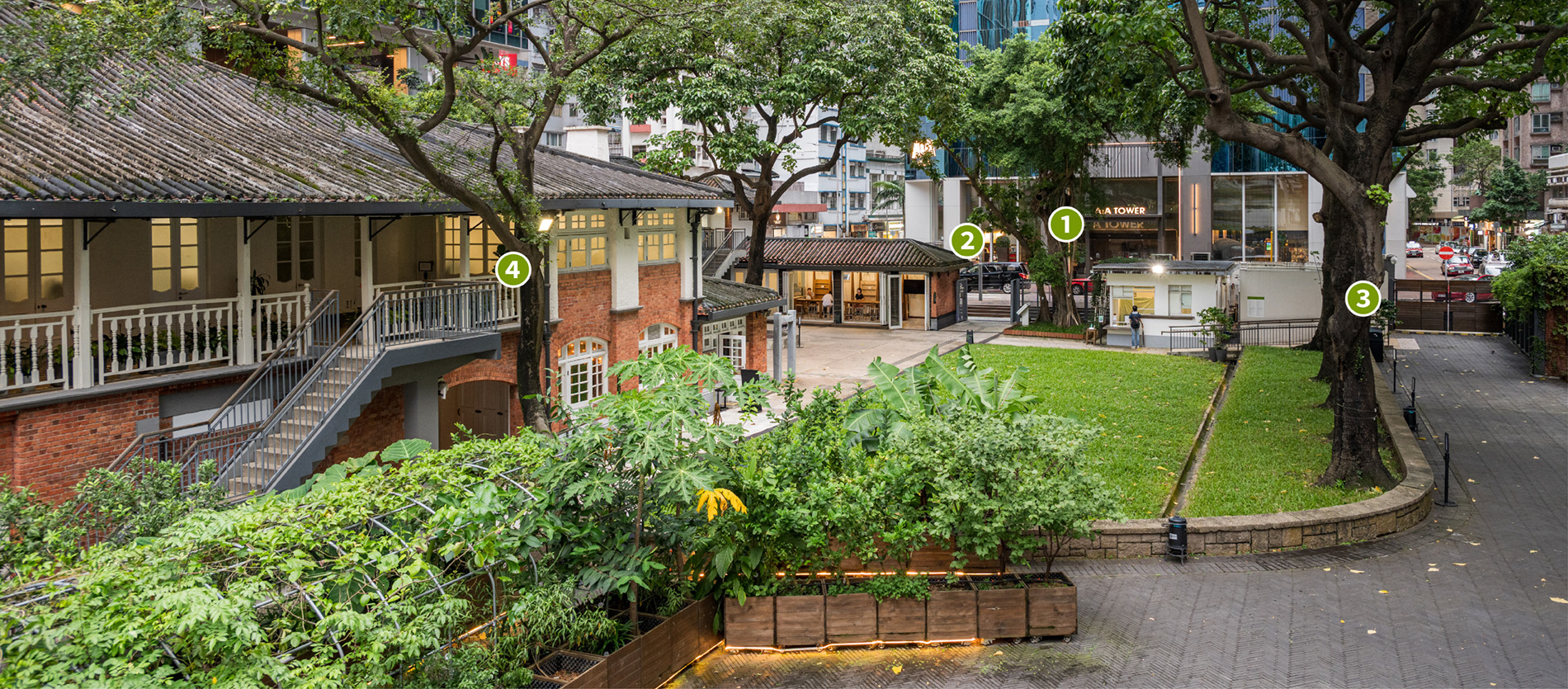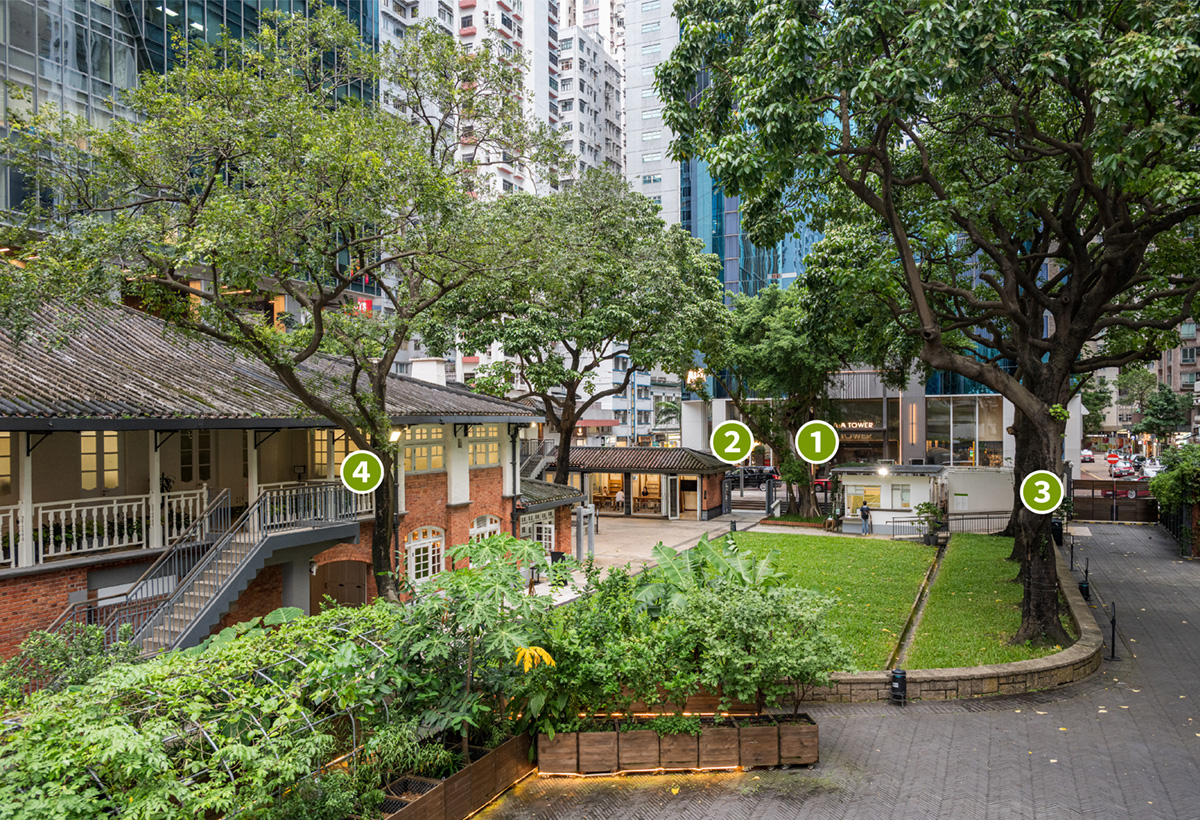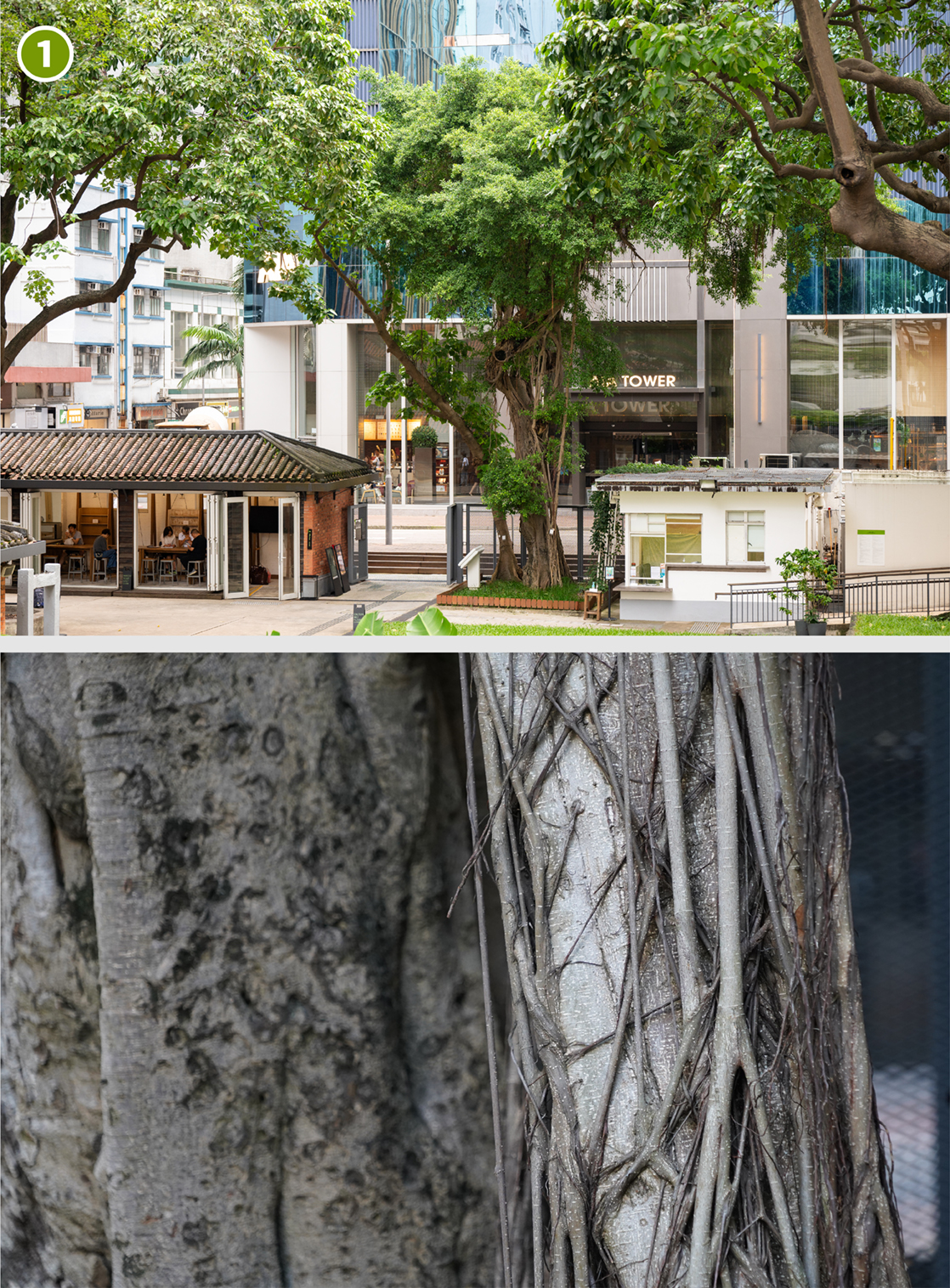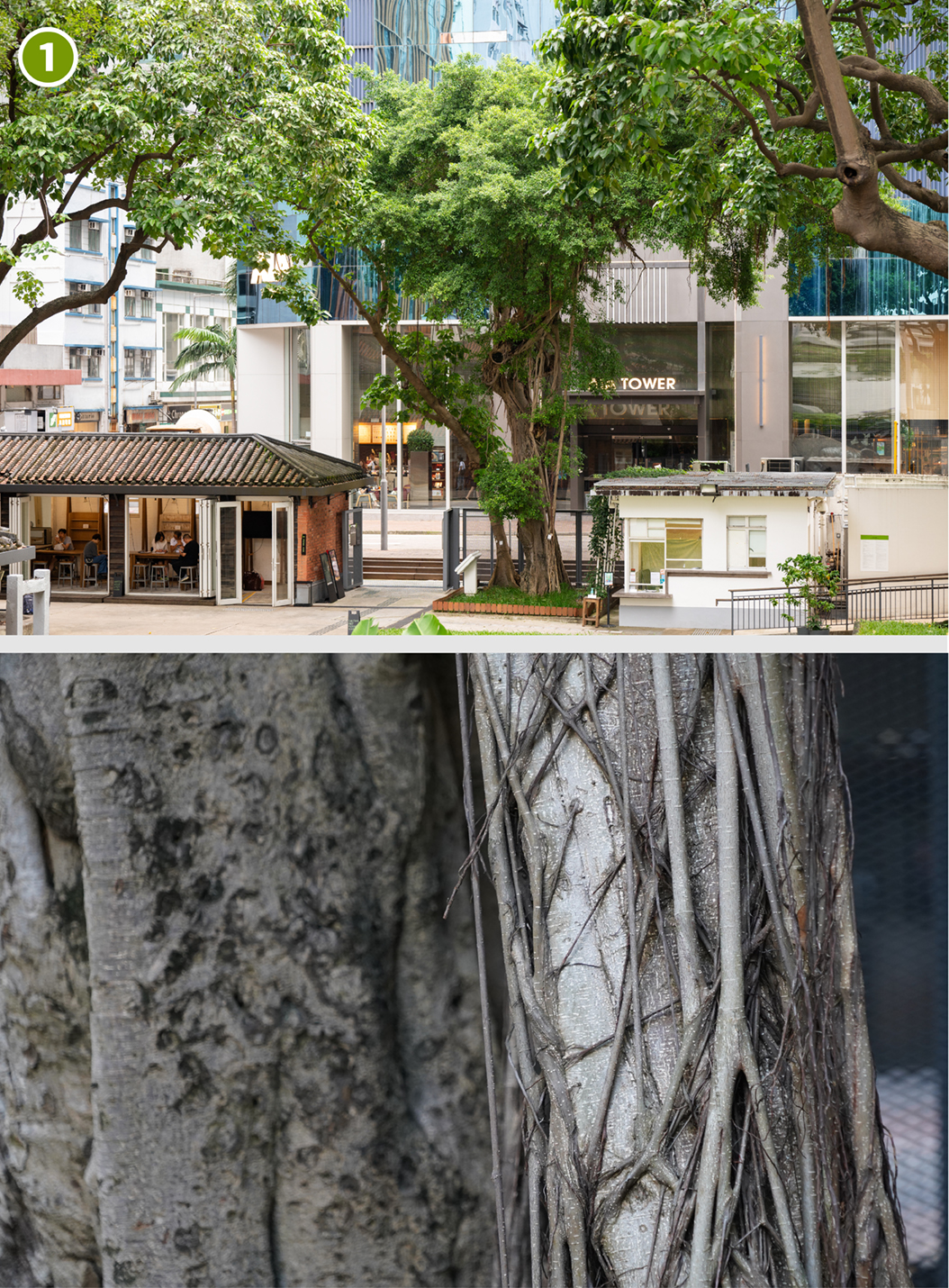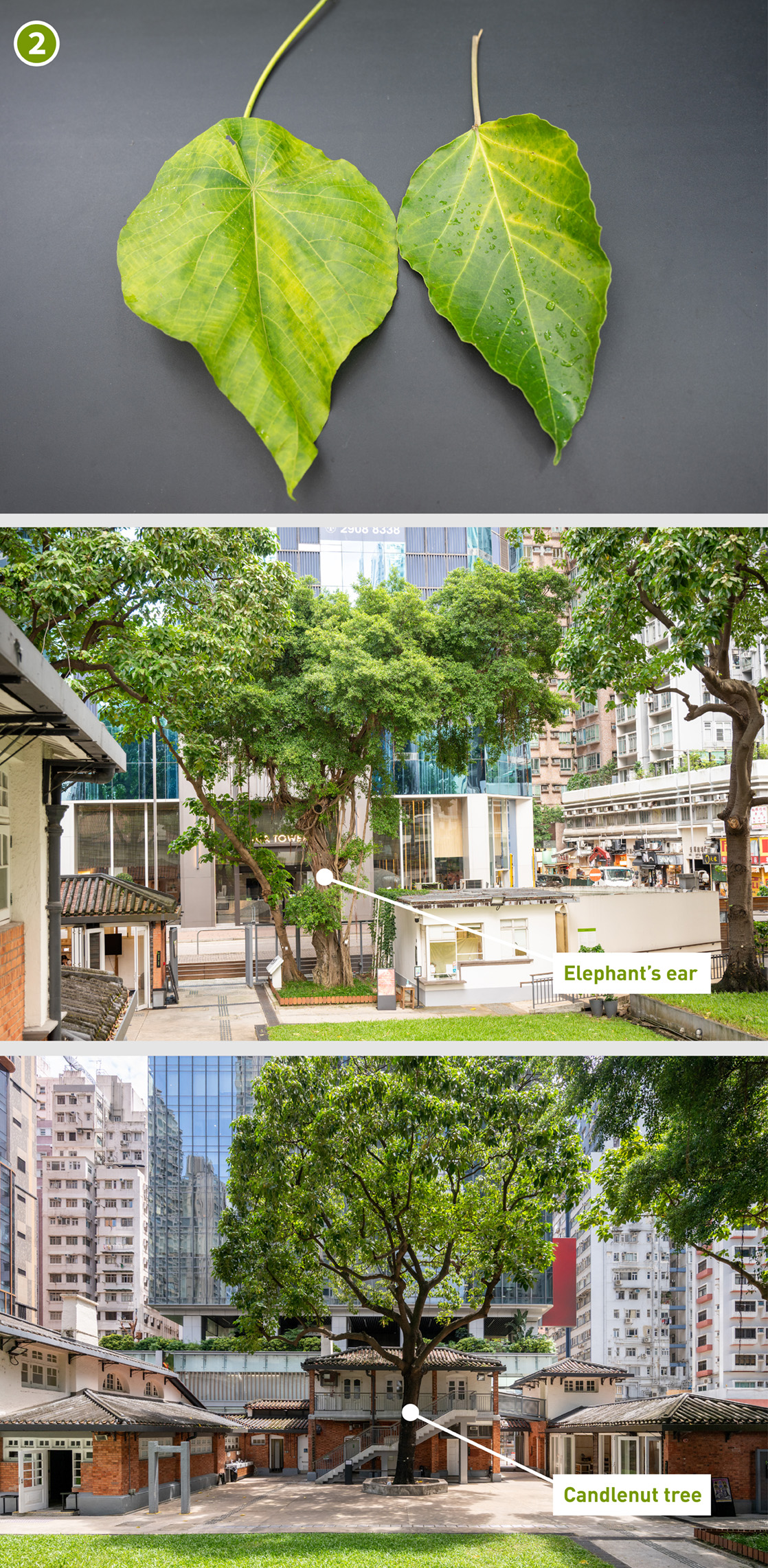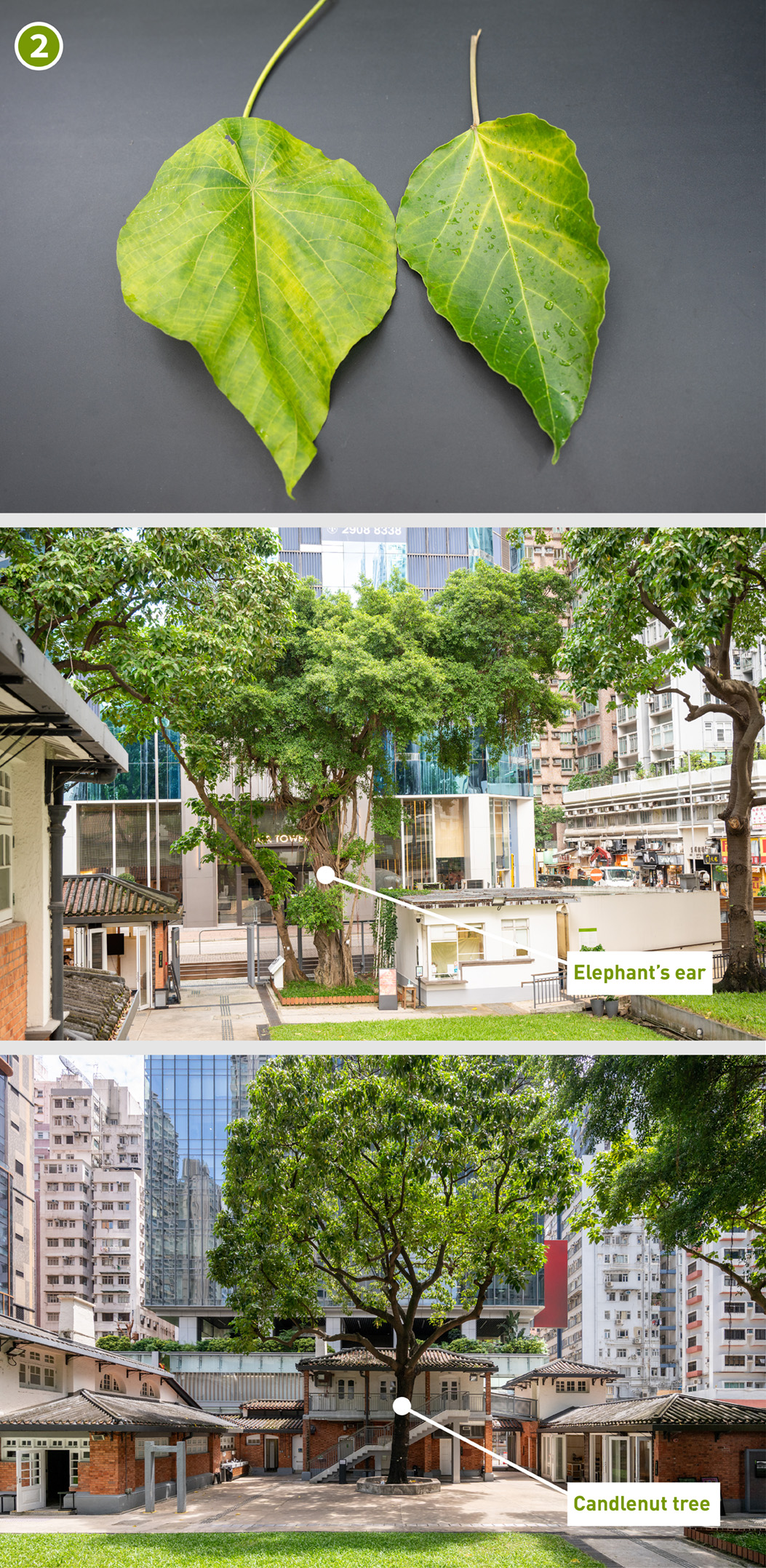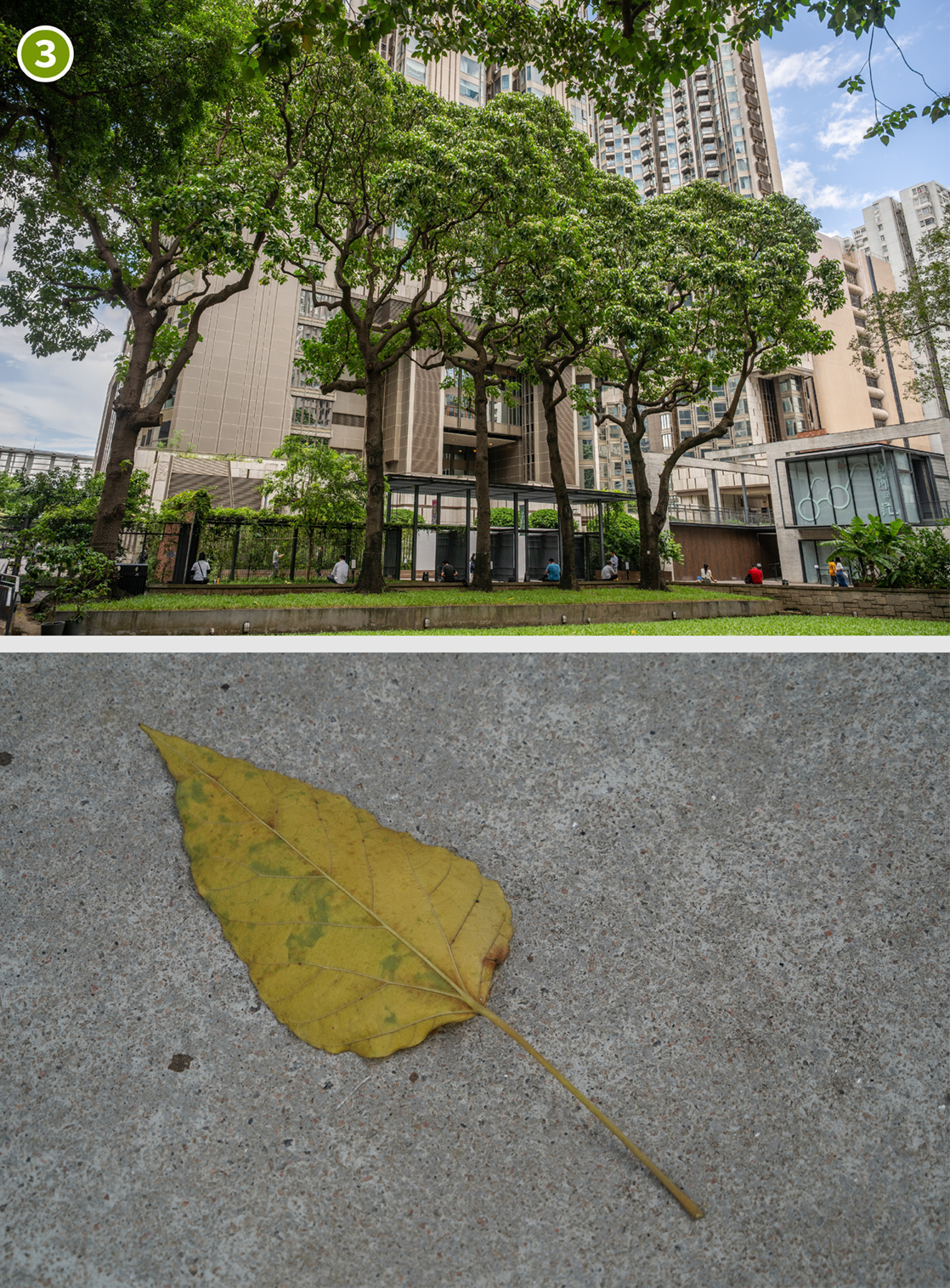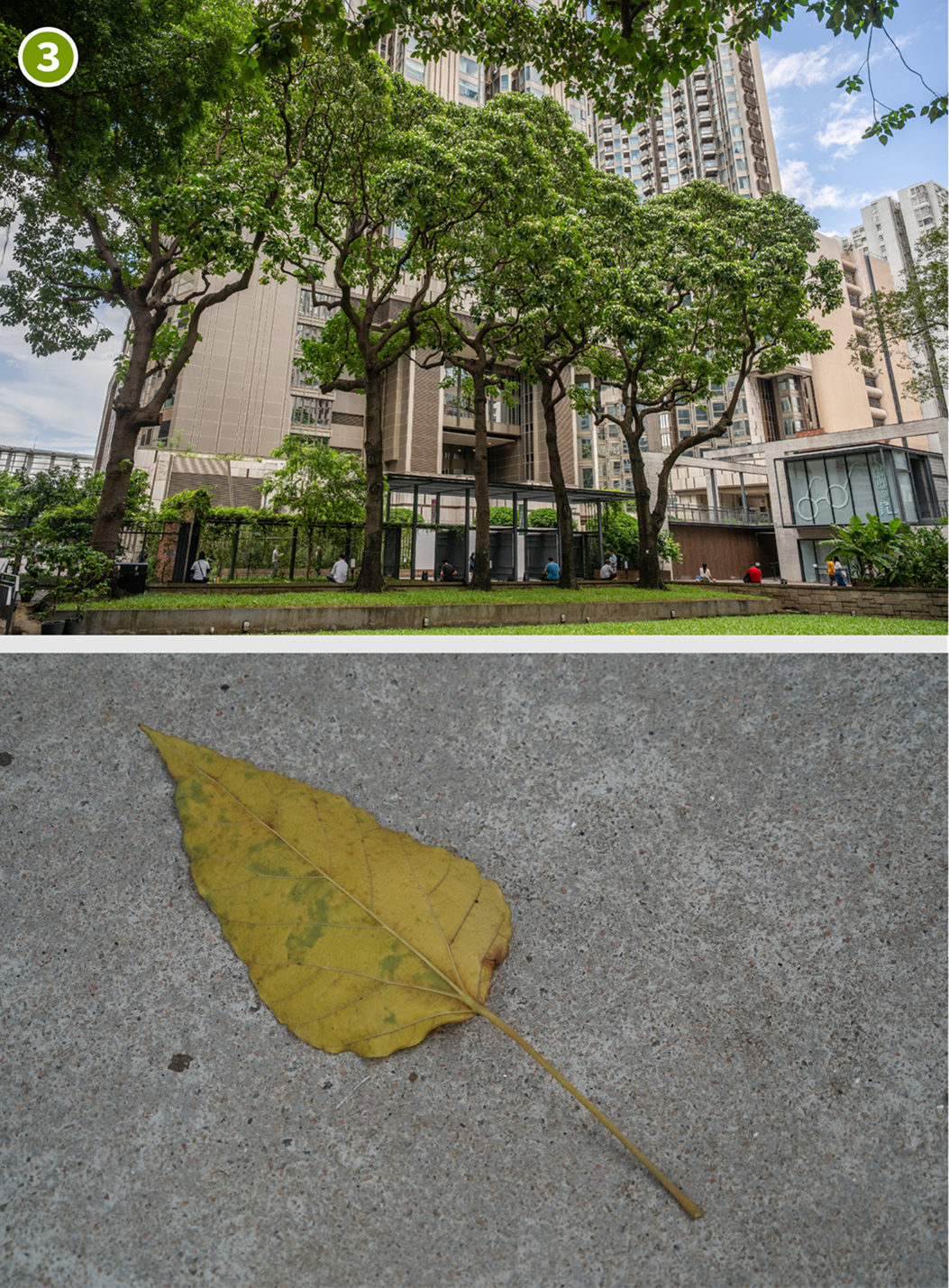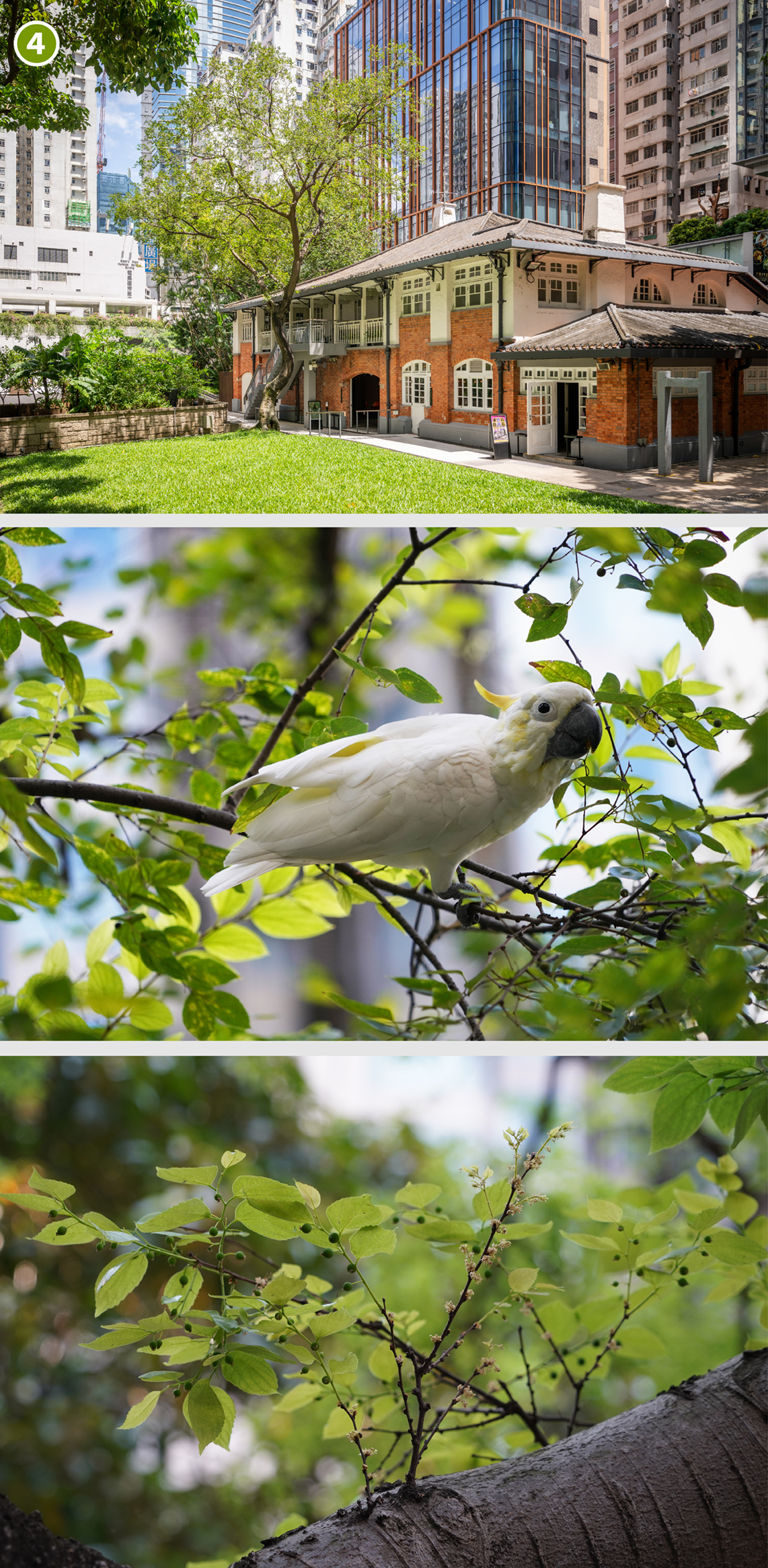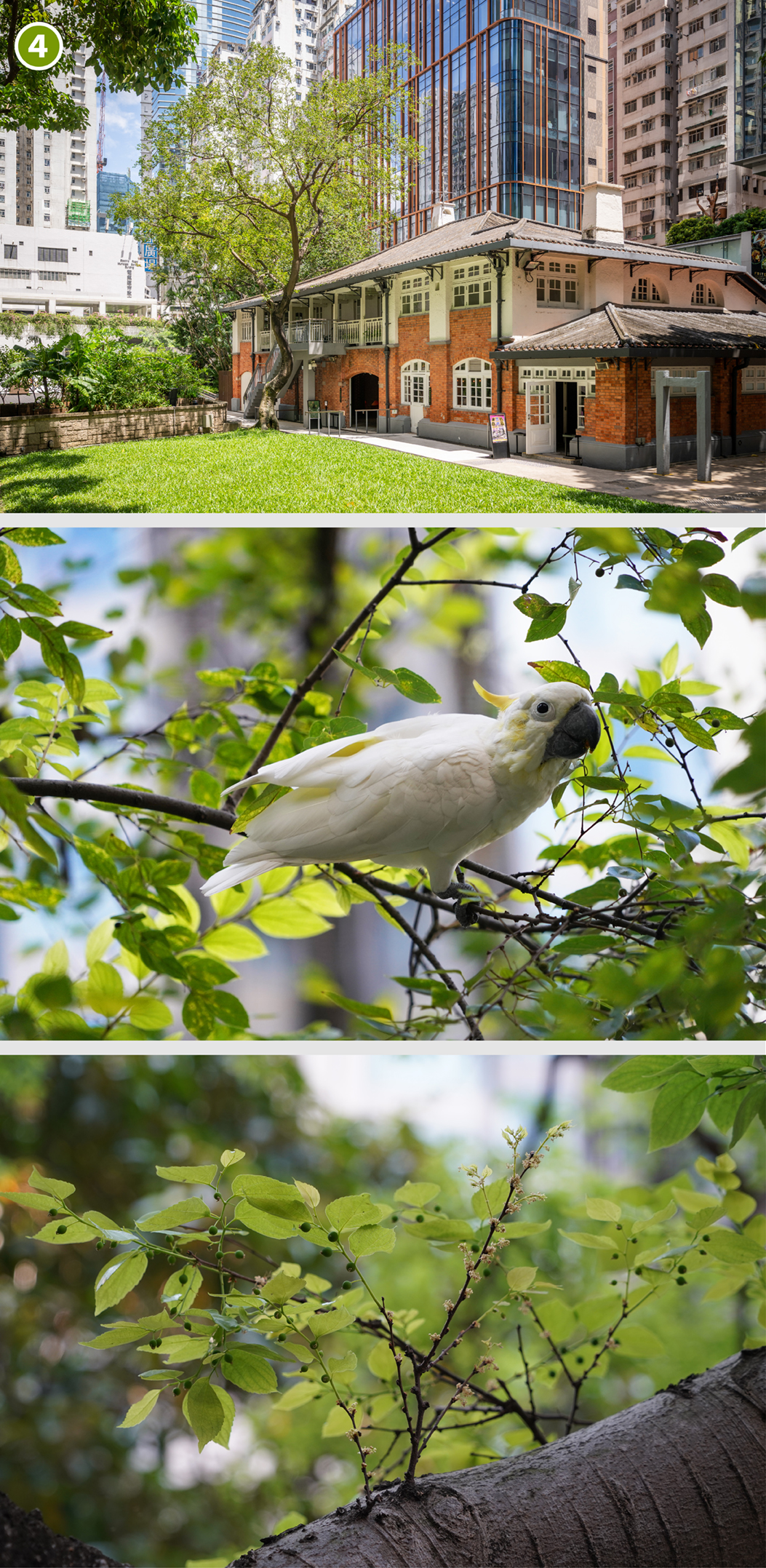Aerial roots of the Chinese banyan
The Chinese banyan is a native evergreen tree, known for its vitality and broad canopy. As it grows over time, it develops hanging aerial roots that absorb moisture and nutrients from the air, enabling it to survive in poor or waterlogged soils. Once these aerial roots reach the ground, they become woody and grow into new "trunks" that support the canopy and enhance the tree's stability.
A leaf of elephant's ear (Left) and a leaf of candlenut tree
The elephant’s ear is an evergreen tree native to Hong Kong. It resembles the candlenut tree, as both belong to the Spurge family. They can be distinguished by their leaf shapes.
Candlenut tree
The candlenut tree originated in Indonesia. It was intentionally introduced to Hong Kong after the Second World War and was widely planted as a pioneer tree species to replace the trees heavily felled during the war. It was commonly planted as a street tree, providing shade to pedestrians, because of its vigorous growth rate, relatively high adaptability and wide crown. Its spherical, hard fruits and dense, palmately lobed leaves provide excellent shade and attract many small birds, enriching the local ecosystem. There are six candlenut trees at Oi!, including five behind the lawn. These trees have stood as companions to Oi! for years and are now approximately 14 metres tall.
Flowers and fruits of Chinese hackberry
The Chinese hackberry is a deciduous tree native to Hong Kong. Its leaves gradually turn yellow and fall in autumn. Some yellow-crested cockatoos can be seen chirping on the tree during summer.
